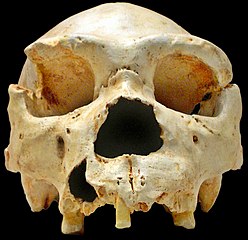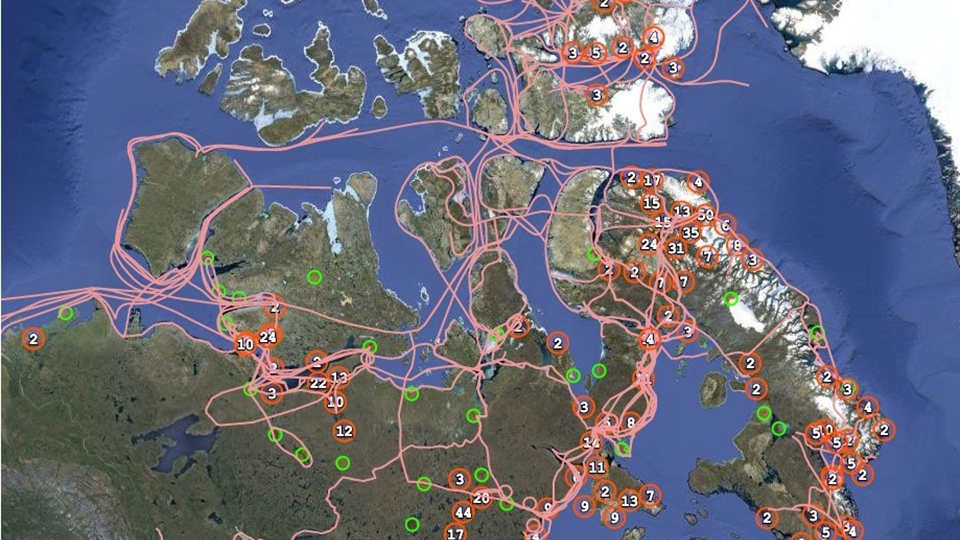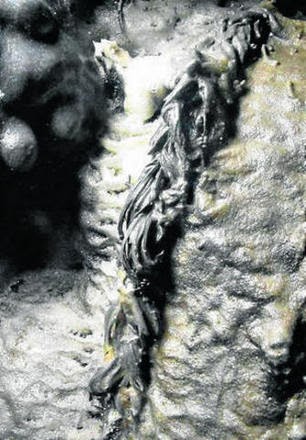Bell Beaker Blogger points me to this latest study on ancient mtDNA from the Center-North Iberian Peninsula, including 20 samples from a Chalcolithic site (without Bell Beaker apparently) that clearly shows continuity with mainline Neolithic (Cardium but also similar to Central European Linear Pottery Culture, both sharing the same Thessalian ultimate origins).
Daniel Gómez Sánchez, Iñigo Olalde et al., Mitochondrial DNA from El Mirador Cave (Atapuerca, Spain) Reveals the Heterogeneity of Chalcolithic Populations. PLoS ONE 2014. Open access → LINK [doi:10.1371/journal.pone.0105105]
Abstract
Previous mitochondrial DNA analyses on ancient European remains have suggested that the current distribution of haplogroup H was modeled by the expansion of the Bell Beaker culture (ca 4,500–4,050 years BP) out of Iberia during the Chalcolithic period. However, little is known on the genetic composition of contemporaneous Iberian populations that do not carry the archaeological tool kit defining this culture. Here we have retrieved mitochondrial DNA (mtDNA) sequences from 19 individuals from a Chalcolithic sample from El Mirador cave in Spain, dated to 4,760–4,200 years BP and we have analyzed the haplogroup composition in the context of modern and ancient populations. Regarding extant African, Asian and European populations, El Mirador shows affinities with Near Eastern groups. In different analyses with other ancient samples, El Mirador clusters with Middle and Late Neolithic populations from Germany, belonging to the Rössen, the Salzmünde and the Baalberge archaeological cultures but not with contemporaneous Bell Beakers. Our analyses support the existence of a common genetic signal between Western and Central Europe during the Middle and Late Neolithic and points to a heterogeneous genetic landscape among Chalcolithic groups.
The results show intense similitude with Catalan Neolithic and Languedoc's Chalcolithic but also with Central European Neolithic. They contrast instead with Portuguese and Basque Neolithic, as well as with Central European Bell Beaker, all them much higher in haplogroup H and, in the Basque case, also in U (being the most modern-like of all ancient mtDNA pools known before the Bronze Age in Europe).
Notice please that the above column for Central European Bell Beaker (BBC) includes the more than dubiously attributed Kromsdorft site, which has a totally different genetic signature. In my previous analysis of European ancient DNA evolution, I treated them separately and I still think that it is much more correct to do it that way.
Notice also that one sample from Mirador was sequenced for autosomal DNA by Evangelia Dasakali, producing an Italian-like sequence, roughly in line with other early European farmers, excepted the Atlantic ones. See here.
So what we see is a "wedge" of Mediterranean or Neolithic ancestry probably penetrating along the Ebro river up to Atapuerca and contrasting with Atlantic Iberian (Basque and Portuguese) ancestry, more modern-like or even "hyper-modern" (by contrast with mainline farmers) in the case of Portugal. This same contrast exists with Central European Bell Beaker sites and also (in the autosomal DNA aspect) with Megalithic farmers from Southern Sweden.
None of those "modernizing" tendencies can be found instead among Eastern European Neolithic peoples nor among early Indoeuropeans of Central Europe such as those of the Unetice culture. So the overall conclusion can only be that there was in the Chalcolithic (and to some extent Neolithic) a duality of ancestries between the Mainline or Mediterranean (but also Danubian) Neolithic and a more "modern" Atlantic Neolithic, which is related to the Megalithic and Bell Beaker cultural phenomena (and in North-Central Europe also to Funnelbeaker).
There are still a lot of dark spots in our understanding of how this "modernization" or "Westernization" of the genetic pool happened but, in general terms, it seems to imply a sizable (albeit somewhat irregular) demographic flow from Atlantic Europe into the areas previously occupied by Mainline Neolithic populations of partial West Asian affinity. This is apparent in both mtDNA as in autosomal DNA.
These sequences from El Mirador (Atapuerca) only underline this phenomenon and the fact that in the Chalcolithic, some 4500 years ago, this process of "modernization" of the European genetic pool was still incomplete.

























